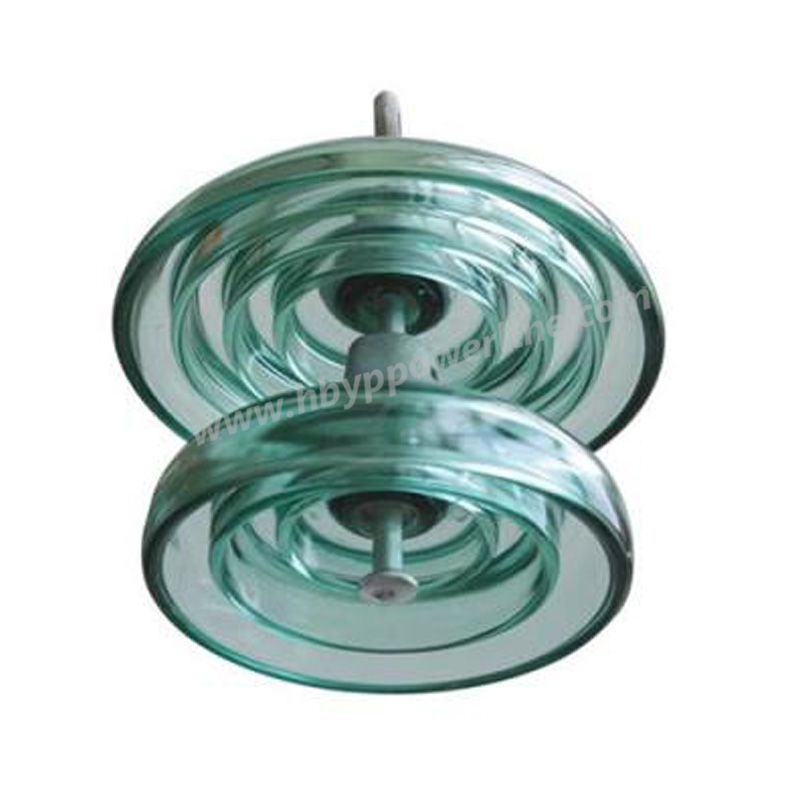Nine questions and answers about basic knowledge of insulators
1. What is the structure of an insulator? What is its function?
Answer:
An insulator (commonly known as a porcelain bottle) consists of a porcelain part and a metal fitting, which are glued together with cement adhesive. The porcelain part ensures that the insulator has good electrical insulation strength, and the metal fitting is used to fix the insulator.
The function of an insulator is two-fold: one is to firmly support and fix the current-carrying conductor, and the other is to form a good insulation between the current-carrying conductor and the ground.
It should have sufficient insulation strength and mechanical strength, and at the same time have sufficient resistance to the corrosion of chemical impurities, and be able to adapt to changes in the surrounding atmosphere, such as the impact of temperature and humidity changes on itself. The insulators used in substations and overhead lines include pin insulators, post insulators, porcelain cross-arm insulators, and high-voltage wall bushings.
2. What is creepage distance? What is leakage ratio distance?
Answer:
Creeping distance and leakage ratio distance are both parameters unique to external insulation. The distance of discharge along the outer insulation surface is the leakage distance of electricity, also known as creepage distance, or creepage distance for short.
The leakage distance multiplied by the effective coefficient and then divided by the line voltage is the leakage ratio distance, that is, λ=KL/U, where: λ is the leakage ratio distance; K is the effective coefficient; L is the leakage distance; U is the line voltage.
3. What is surface discharge?
Answer:
There are many suspension and pin insulators, transformer bushings and wall bushings in the power system. Many of them are in the air. When the voltage of these devices reaches a certain value, the air on the surface of these porcelain devices discharges, which is called discharge along the surface of solid medium, or surface discharge for short.
When the surface discharge runs through the two poles, a surface flashover is formed. The surface discharge voltage is lower than the discharge voltage in the air. The surface discharge voltage is related to the uniformity of the electric field, the surface state of the solid medium and the meteorological conditions.
4. What is flashover? What causes flashover?
Answer:
When the gas or liquid dielectric around the solid insulation is broken down, the phenomenon of discharge along the surface of the solid insulation is called flashover.
In dirty areas, there are many industrial dirt particles on the surface of porcelain insulators. When these dirt particles are wet, they will form a conductive liquid film on the porcelain surface, which will significantly reduce the withstand voltage of the porcelain insulation and make the flashover voltage very low. This is why porcelain insulation is very easy to flashover under dirty and wet conditions. Dirt and moisture are necessary conditions for flashover. Porcelain insulation that is only dirty but not wet will not cause flashover.

5. How to prevent flashover of insulators in substations?
Answer:
(1) Increase basic insulation. For example, increase the number of insulators and increase the distance of surface discharge to meet the leakage ratio distance specified by the pollution classification.
(2) Strengthen cleaning. Porcelain insulation in dirty areas must be cleaned regularly to keep the surface of porcelain insulation clean to prevent flashover. Live water flushing is an effective means.
(3) Use dust-proof coating. In dirty areas, when the effective leakage ratio of porcelain insulation cannot meet the requirements and the cleaning workload needs to be reduced, silicone oil, beeswax and other methods are often used to increase the flashover voltage and prevent flashover accidents.
(4) Use semiconductor sleeve insulators and silicone rubber insulators.
6. Why is the surface of porcelain insulators made into a corrugated shape?
Answer:
(1) Extending the arc creepage length can increase the arc creepage distance within the same effective height, and each one can play a role in blocking the arc.
(2) In rainy days, it can play a role in blocking the flow of water, and the sewage cannot flow directly from the upper part of the porcelain bottle to the lower part, avoiding the formation of flying dust and causing confusion.
(3) When the dust falls on the corrugated porcelain insulator, the distribution is uneven, so the strength of the porcelain bottle is guaranteed to a certain extent.
7. Under what circumstances are porcelain insulators prone to damage?
Answer:
(1) Improper installation and use of porcelain insulators, such as mechanical load exceeding regulations, voltage level not meeting requirements, improper installation location, etc.
(2) Damage caused by sudden cold and hot weather and hail.
(3) Flashover caused by dirty porcelain insulators during thunderstorms and foggy weather.
(4) Short circuit of electrical equipment, damage to porcelain insulators caused by excessive electrical and mechanical stress.
8. What are the consequences of cracks in insulator castings and bonding parts?
Answer:
After the iron valve flange and bonding layer are cracked, the sealing performance of the electrical appliance is reduced, which may cause moisture and water ingress to the oil injection equipment and damage to the internal insulation. In serious cases, it may cause equipment explosion accidents. Cracks in the cast iron flange of the disconnector or busbar support insulator may cause the support to separate from the electrical insulator, resulting in equipment failure, and may cause the insulator to collapse or fall, causing a short circuit accident.
9. Why does the tension insulator string have one more piece than the general line?
Answer:
Operation experience has shown that the tension insulator string is subject to a large mechanical load and is easy to deteriorate. The chance of zero-value insulator strings is more than that of suspension strings, so the number of reserved insulators should be one more piece than that of straight lines.
- Previous: Types of Automotive Wiring Harnesses
- Next: None

